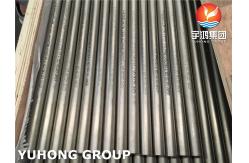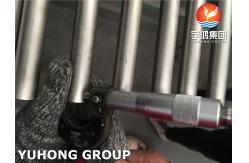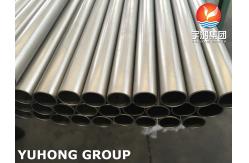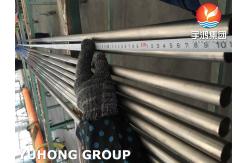ASME SB338 GR7 UNS R52400 Ti Alloy Tube For Condenser Heat Exchanger
|
|
ASME SB338 GR7 UNS R52400 Ti Alloy Tube for Condenser Heat Exchanger
ASME SB338 is the standard specification for seamless and welded titanium and titanium alloy tubes or tubing which are intended for surface condensers, evaporators, and heat exchangers. It is identical with ASTM B338 except for some minor difference in product marking. There are 28 grades of titanium and titanium alloys for tubing purpose, among which Titanium Grade 2, Grade 7 and Grade 12 are most often seen in tubing applications.
Titanium Alloy Grade 7 has outstanding corrosion resistance and useful strength at low density. A small addition of palladium has been made to this alloy for a substantial increase in corrosion resistance.
What is the titanium alloy? Titanium alloy refers to a variety of alloy metals made of titanium
and other metals. Titanium is an important structural metal
developed in the 1950s, titanium alloy has high strength, good
corrosion resistance and high heat resistance. In the 1950s to
1960s, it was mainly the development of high-temperature titanium
alloys for aeroengines and structural titanium alloys for the body.
History of titanium development
According to relevant statistics, in 2012, the amount of titanium used in China's chemical industry reached 25,000 tons, which was reduced from 2011. This is the first time since 2009 that China's chemical titanium market has experienced negative growth. In recent years, the chemical industry has been the largest user of titanium processing materials, and its proportion in the total consumption of titanium materials has been maintained at more than 50%, accounting for as high as 55% in 2011. However, with the economic downturn, the chemical industry will not only significantly reduce the number of new projects, but also face industrial restructuring, the new production capacity of some products is controlled, and backward production capacity will be phased out. Affected by this, the shrinkage of the amount of titanium processing materials has become natural. Prior to this, some industry insiders predicted that the amount of titanium used in the chemical industry would peak between 2013 and 2015. According to the current market performance, the weakness of the overall economy in 2012 May make the decline period of chemical titanium earlier.
Chemical Composition Of GR7
Titanium Grade 7 Tubing Mechanical Properties
Titanium Grade 7 Tubing Physical Properties
GR7 Material Equivalent
Applications -Chlorination systems
|
|||||||||||||||||||||||||||||||||||||||||||||||||||||||||||||||||||||||||||||||||||||||||||||||||||||||||||||||||||||||||||||||||||||||||||||||||||||||||||||||||||||||||||
| Product Tags: Titanium Alloy Heat Exchanger Tube Condenser Ti Alloy Tube UNS R52400 Ti Alloy Tube | |||||||||||||||||||||||||||||||||||||||||||||||||||||||||||||||||||||||||||||||||||||||||||||||||||||||||||||||||||||||||||||||||||||||||||||||||||||||||||||||||||||||||||
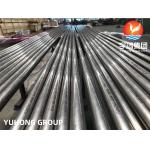
|
ASTM B163 Monel 400 UNS N04400 Seamless Nickel Copper Alloy Tube Bright Surface |
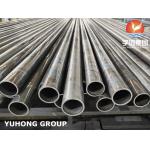
|
SA213 T11 Seamless Ferritic Alloy Steel Tube For Power Plant Boilers |
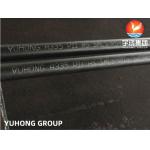
|
ASTM A335 /ASME SA335 Alloy Steel Seamless Tubes P11 / P12 / P22 / P5 /P9 / P91 / P92 Size 1/2" To 24" NPS |
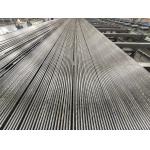
|
Asme Sa213 T1 Asme Sa209 T1 Seamless Boiler Tubes |
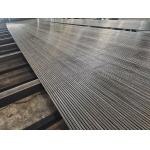
|
AD2000 Asme Sa213 T11 Alloy Steel Seamless Tubes |
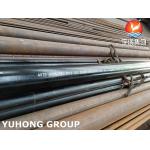
|
ASTM A335 / ASME SA335 P91 K90901 / 1.4903Alloy Steel Seamless Pipe |

